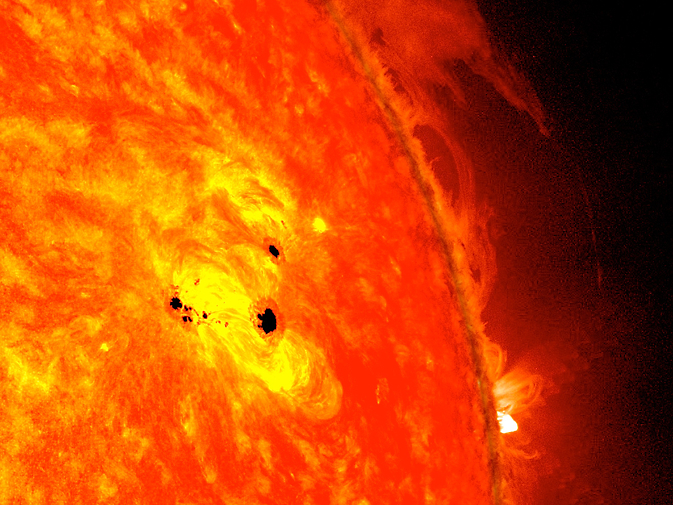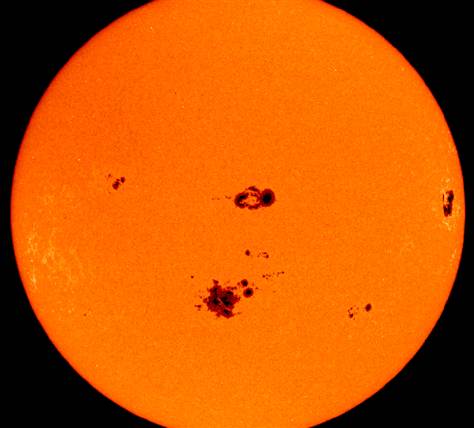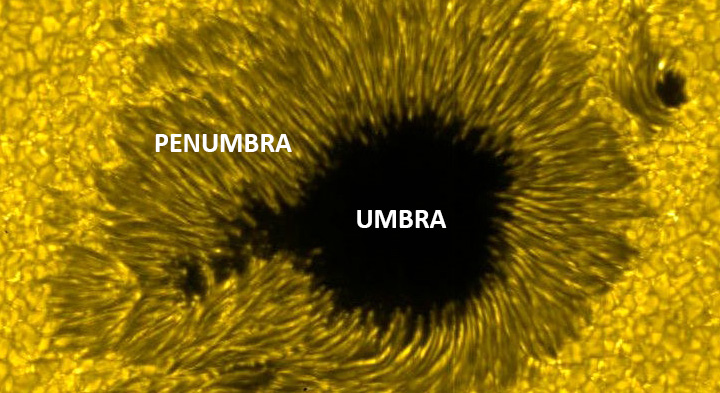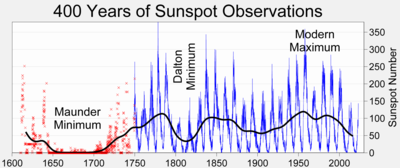What are Sunspots?
Sunspots are areas on the surface of the Sun that appear darker than the neighboring areas. They are temporary phenomena on the Sun's photosphere. They are regions of reduced surface temperature, i.e cooler than the remainder. Sunspots appear dark because they are cooler than other parts of the Sun's surface.


Sunspots have temperatures of about 3800 K. They can be very large, up to 50,000 kilometers in diameter. They look dark only in comparison with the more illuminated part of the Sun.
What causes Sunspots?
Sunspots are comparatively cooler than the rest of the Sun's surface because they form at areas where magnetic fields are especially strong, which are not fully understood yet. These magnetic fields are so powerful that they keep some of the heat within the Sun from arriving on its surface. Most Solar flares happen around the regions where sunspots are.
Sunspots have two parts: the central umbra, which is the darkest part, and the surrounding penumbra, which is lighter, where the magnetic field is more oblique.

Sunspots Cycle

Comments
Post a Comment